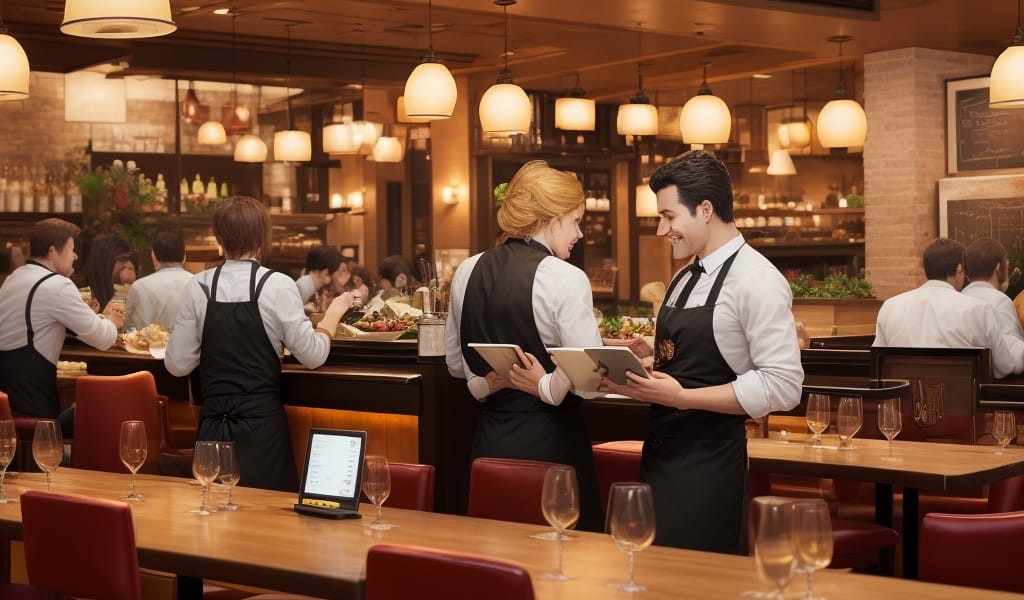Key Takeaways:
- Optimize your restaurant’s website for local SEO by including location-specific keywords in your title tags, meta descriptions, and content.
- Register your restaurant on Google My Business for increased visibility in local search results and Google Maps.
- Encourage satisfied customers to leave positive reviews on platforms like Yelp and Google to boost your online reputation and search ranking.
- Ensure your restaurant’s contact information (name, address, phone number) is consistent across all online platforms to improve your local search ranking.
- Use social media platforms to engage with local customers and share location-specific promotions, further boosting your local online presence.
Local SEO Tips to Get Found by Hungry Customers
SEO strategies to rank higher in local searches
In today’s digital age, hungry customers frequently turn to their smartphones to find their next meal. Whether it’s a quick lunch spot, a romantic dinner venue, or a trendy café, local searches dominate how diners discover restaurants. Optimizing your restaurant’s online presence using local SEO strategies is essential to improve your F&B visibility and attract more customers. In this guide, we’ll explore actionable online search tips that will help your business rank higher and become the go-to choice for hungry guests in your area.
Why Local SEO Matters for Restaurants
Local search engine optimization (SEO) involves optimizing your restaurant’s online presence to appear prominently in search results when potential customers search for nearby dining options. Google’s increasing focus on local relevance means businesses that invest time and resources in local SEO can see significant increases in traffic, bookings, and revenue.
- 46% of all Google searches are seeking local information.
- 88% of consumers who search for a local business visit or call within 24 hours.
- Restaurants rank among the top categories people search for locally.
Clearly, leveraging local SEO is a powerful way to boost your restaurant’s visibility and attract diners actively searching for a place to eat.
Claim and Optimize Your Google Business Profile
Your Google Business Profile (formerly Google My Business) is the cornerstone of local SEO. It directly impacts how your restaurant appears in Google’s local pack, maps, and search results.
Complete Your Profile Thoroughly
Ensure all details about your restaurant are accurate, consistent, and complete:
- Restaurant name, address, and phone number (NAP)
- Operating hours, including special holiday hours
- Menu and pricing information
- Photos of dishes, interior, and exterior
- Restaurant attributes (Wi-Fi availability, outdoor seating, delivery)
Encourage Customer Reviews
Positive reviews improve your restaurant’s reputation and search visibility. Regularly encourage guests to leave honest feedback, respond to reviews promptly, and professionally address negative reviews to demonstrate your commitment to customer satisfaction.
Add Regular Updates and Posts
Use Google’s posts feature to showcase events, special menus, promotions, or seasonal offerings. Regular content updates keep your profile fresh, engaging, and relevant to local diners.
Utilize Location-Specific Keywords on Your Website
Effective local SEO relies on strategic keyword placement to connect your restaurant with diners in your area.
Target Geographic Keywords
Integrate location-specific keywords naturally within your website’s content, page titles, headings, and meta descriptions. For example, instead of simply targeting “Italian restaurant,” optimize for “best Italian restaurant in Brooklyn.”
Create Location-Specific Landing Pages
If you operate multiple restaurant locations or cater to nearby neighborhoods, create dedicated landing pages optimized for each location. Include location-specific content, keywords, and details unique to each area.
Include Your NAP Consistently
Your restaurant’s name, address, and phone number (NAP) should be consistent across your website, social media, and online directories. Consistency boosts credibility and signals to search engines that your business is authentic and reliable.
Optimize Your Website’s Mobile Experience
Most restaurant searches happen on mobile devices, making mobile optimization critical for local SEO.
Ensure Mobile-Friendly Design
Your restaurant’s website should load quickly, display clearly, and be easy to navigate on smartphones. Avoid slow-loading content, complicated navigation, or text that’s difficult to read on smaller screens.
Integrate Click-to-Call and Directions Features
Make it effortless for customers to contact you or find your restaurant by integrating click-to-call buttons and direct links to popular navigation apps. Streamlining the user experience encourages more diners to visit your establishment directly from their mobile devices.
Leverage Online Directories and Citations
Listings on reputable online directories help boost your restaurant’s online presence and local SEO ranking.
Identify and Claim Relevant Directories
Claim and complete your profiles on popular platforms such as Yelp, TripAdvisor, OpenTable, and local business directories. Ensure your NAP details are consistent across all platforms.
Monitor and Update Your Listings Regularly
Check regularly to ensure your directory listings remain accurate, especially if your hours, contact details, or menu change. Regular updates prevent confusion among potential customers and reinforce your restaurant’s reliability.
Use Structured Data Markup (Schema)
Structured data markup helps search engines understand your website’s content clearly and enhances your visibility within search results.
Implement Schema Markup for Restaurants
Use restaurant-specific schema markup to highlight essential details like menu items, prices, opening hours, reviews, and reservations. This can lead to rich snippets appearing in search results, significantly boosting click-through rates.
Monitor and Test Your Structured Data
Regularly test and validate your structured data using Google’s Structured Data Testing Tool to ensure accuracy and optimal performance.
Engage Your Community through Social Media
Social media platforms offer excellent opportunities for increasing your local visibility and customer engagement.
Share Localized Content Regularly
Create and post content tailored specifically to your local community. Highlight local suppliers, neighborhood events, or collaborations with nearby businesses to strengthen community ties and relevance.
Encourage Check-Ins and User-Generated Content
Encouraging customers to share their dining experiences on social media platforms helps spread organic visibility. Offer incentives such as discounts for customers who check-in or tag your restaurant in their posts.
Case Study: Joe’s Gourmet Pizza’s Local SEO Success
Joe’s Gourmet Pizza, a family-owned pizzeria in Chicago, faced challenges ranking in local searches due to stiff competition. They implemented several targeted local SEO strategies:
- Optimized Google Business Profile with accurate NAP details, enticing photos, and regular updates
- Added location-specific keywords such as “Chicago deep-dish pizza” throughout their website’s content
- Created structured data markup to clearly communicate menu and pricing details to search engines
- Encouraged customers to leave reviews and actively responded to them
Within six months, Joe’s Gourmet Pizza saw a 40% increase in organic local traffic, a substantial rise in positive reviews, and consistent growth in sales and dine-in customers.
Tracking and Measuring Your Local SEO Success
Regular monitoring of your SEO performance helps you refine strategies for optimal results.
Use Analytics Tools
Leverage tools like Google Analytics and Google Search Console to track key metrics such as organic website traffic, keyword rankings, and user engagement.
Monitor Local Rankings and Reviews
Regularly check your rankings in local search results and monitor your online reviews to understand your restaurant’s reputation and identify areas for improvement.
Conclusion
Investing in local SEO is crucial for increasing your restaurant’s visibility to hungry customers searching online. By optimizing your Google Business Profile, leveraging location-specific keywords, enhancing your mobile experience, and engaging actively with your local community, you position your restaurant to thrive in a competitive market. Start implementing these online search tips today and watch as your local SEO efforts bring more diners through your doors.






Comments
Be the first to comment on this article.